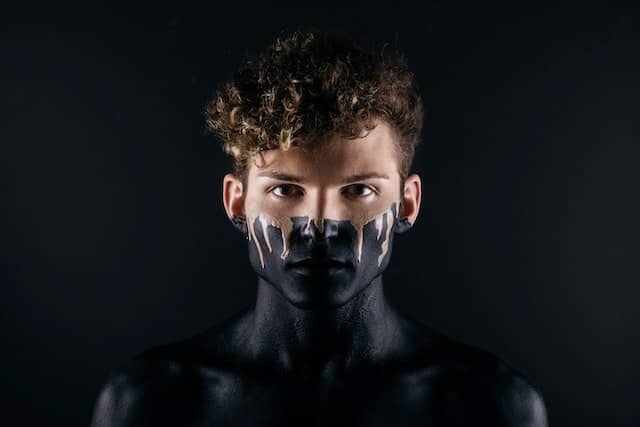William Golding’s classic novel, “Lord of the Flies,” is a thought-provoking exploration of human nature and the dark side of society. One of the intriguing aspects of the story is the character of Jack, a charismatic and volatile leader who gradually descends into savagery. Throughout the book, Jack is frequently depicted with his face painted in various colors, giving him an eerie and menacing appearance. But why does Jack paint his face?
As it turns out, the answer to this question sheds light on the complex motivations driving the character and the themes of the novel as a whole. Specifically, Jack paints his face like a mask in Chapter 4 to act as camouflage so the pigs cannot see him when he is hunting. This seemingly simple act has profound implications for the story, revealing the tension between civilization and savagery, the power of symbols and rituals, and the primal instincts that lurk beneath the surface of human society. In this article, we will delve deeper into the significance of Jack’s face paint, exploring its cultural and psychological implications and its relevance to the broader themes of the novel.
Why does Jack paint his face? (Complete Answer)
The Lord of the Flies tells the story of a group of British schoolboys who are marooned on a deserted island after a plane crash. As a result, they are left to fend for themselves without adult supervision. As they struggle to survive, they form their own society with leaders, rules, and rituals. One of the most memorable characters in the book is Jack, a charismatic and ambitious boy who gradually becomes more and more savage as the story progresses. One of the distinctive aspects of Jack’s character is that he frequently paints his face in various colors, giving him a menacing and primitive appearance. But why does Jack paint his face in Chapter 4, and what does this act signify?
According to the novel, Jack paints his face like a mask to act as camouflage when hunting pigs. The rationale behind this is that the pigs will not be able to see him coming if his face is painted, making it easier for him to catch them. This use of face paint as a form of camouflage is not uncommon in traditional societies, where hunters often use it to blend in with their surroundings and avoid detection. By adopting this tactic, Jack is tapping into a primal instinct for survival and demonstrating his hunting prowess to the other boys.
However, the use of face paint also has deeper symbolic significance in the novel. For one thing, it represents a rejection of the boys’ previous identity as civilized British schoolboys. By painting their faces and adopting primitive rituals, they are distancing themselves from the norms and values of their former society and embracing a more elemental and savage way of life. In this sense, Jack’s facepaint expresses his desire to escape civilization’s constraints and give in to his most primal instincts.
Moreover, the face paint can also be interpreted as a form of tribalism or group identity. By painting their faces in different colors, the boys are signaling their allegiance to their respective groups and distinguishing themselves from one another. This tribalism ultimately leads to conflict and violence as the boys become increasingly entrenched in their factions and lose sight of their shared humanity.
How does Jack feel when he paints his face?
Jack feels a sense of liberation and transformation when he paints his face. It gives him a sense of anonymity and power and allows him to shed his civilized persona and embrace his inner savage. The face paint is a symbolic representation of Jack’s descent into savagery and his rejection of the rules and structure of civilization.
What does Jack’s mask symbolize in Lord of the Flies?
In Lord of the Flies, Jack’s mask symbolizes the loss of civilization and the descent into savagery. With the mask on, Jack is no longer bound by the rules and expectations of society. He becomes more primal and animalistic, giving in to his violent tendencies. The mask also represents the power that Jack gains over the other boys through fear and intimidation. It allows him to become a terrifying figure, causing the other boys to fear him and follow his lead. Ultimately, the mask symbolizes the darkness that lies within each individual and the capacity for evil that can emerge when the constraints of society are removed.
What 3 colors does Jack use to camouflage himself?
In the book Lord of the Flies, Jack uses three colors to camouflage himself: red, black, and white.
Conclusion
In conclusion, the act of Jack painting his face in “Lord of the Flies” serves multiple purposes. On one level, it is a practical tactic for hunting and survival. But on a deeper level, it represents a rejection of civilization, an embrace of primal instincts, and a manifestation of tribalism. By examining the significance of this seemingly minor detail, we gain a deeper understanding of the themes and motifs that run throughout the novel.
